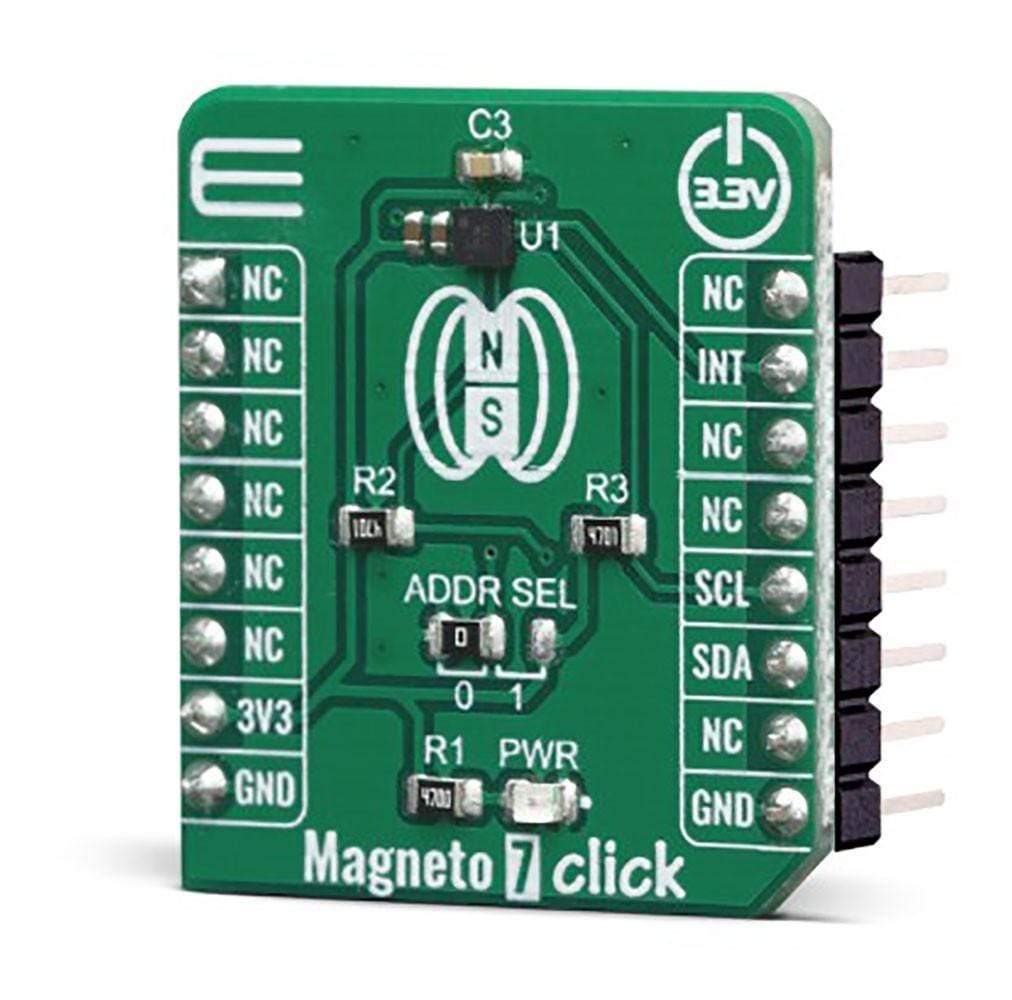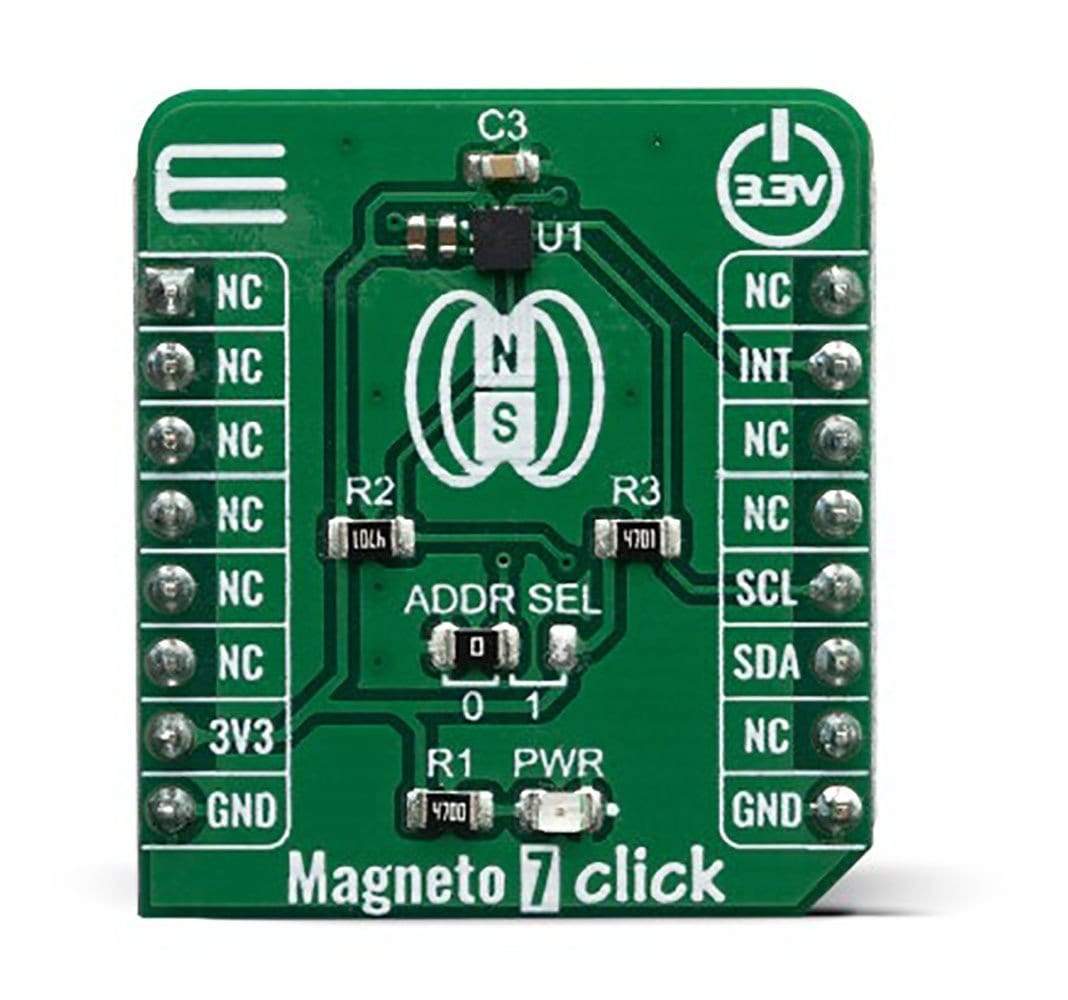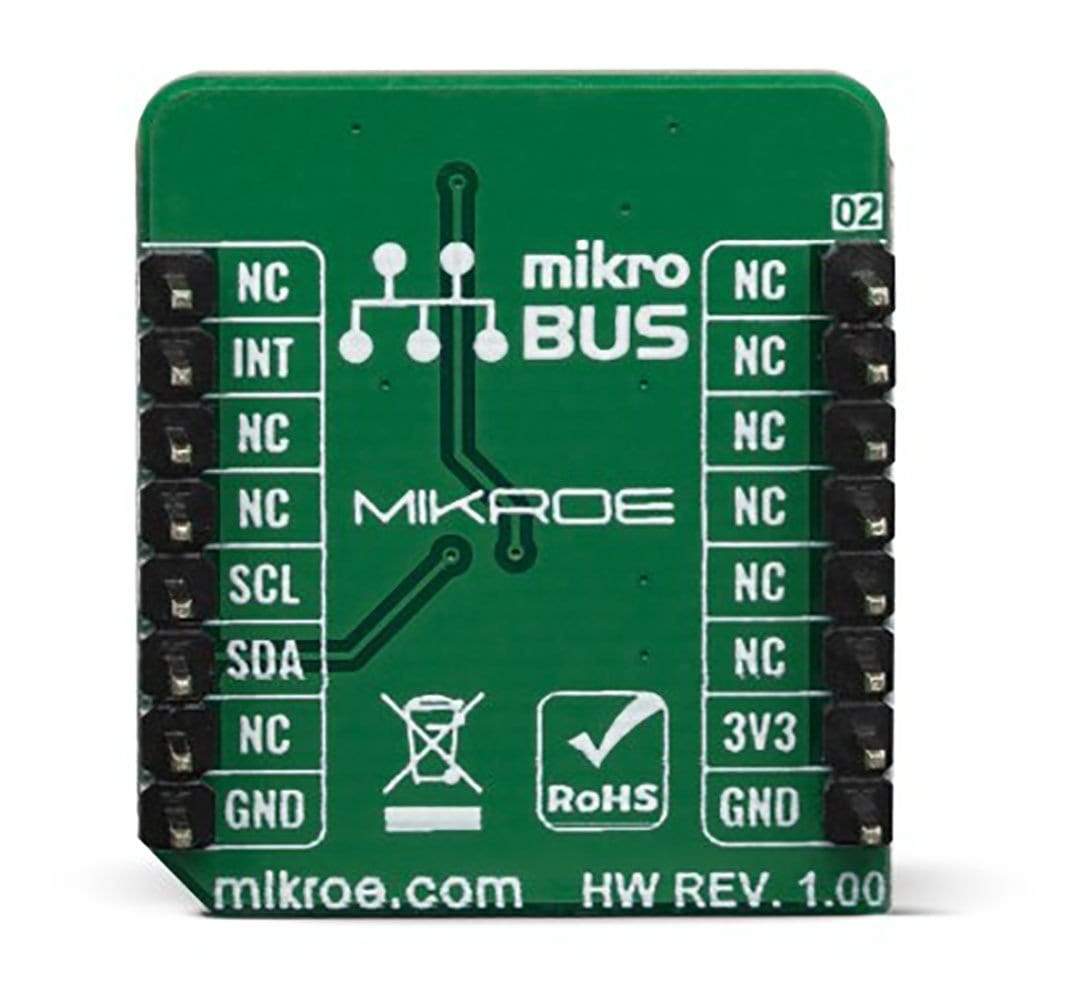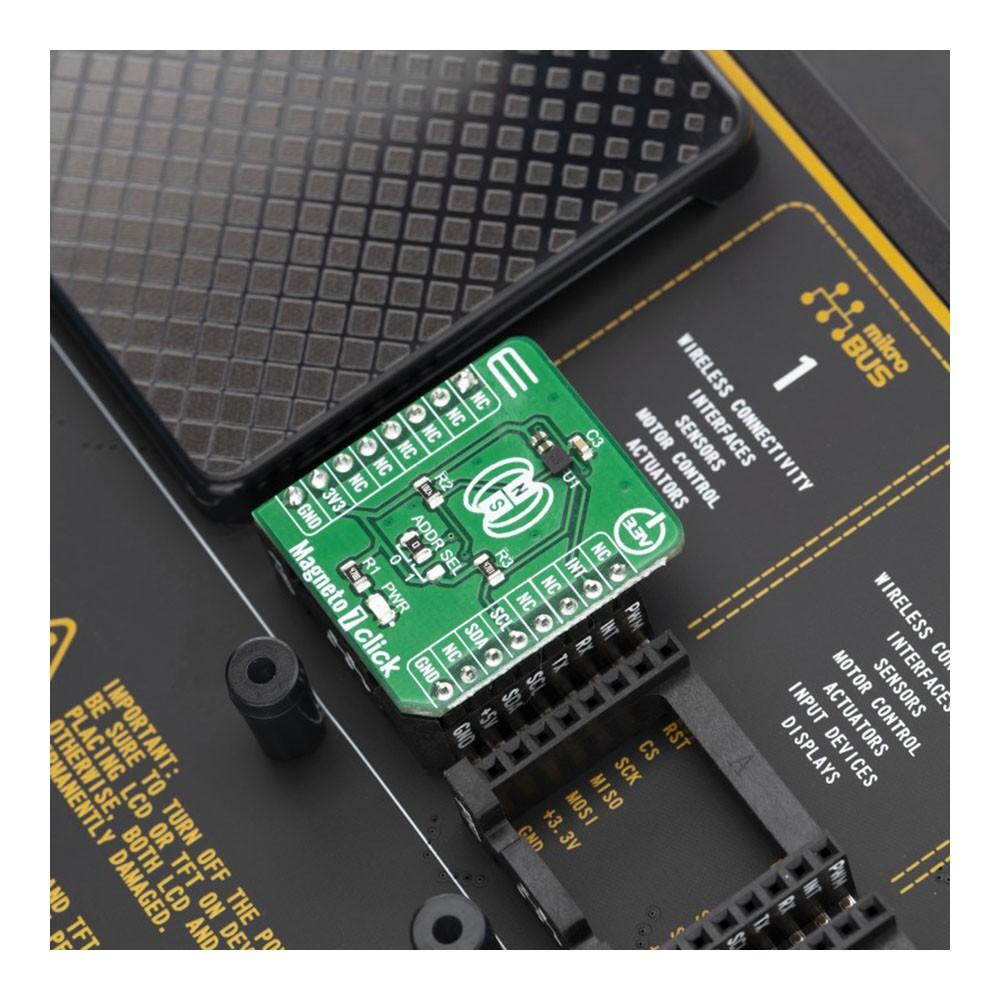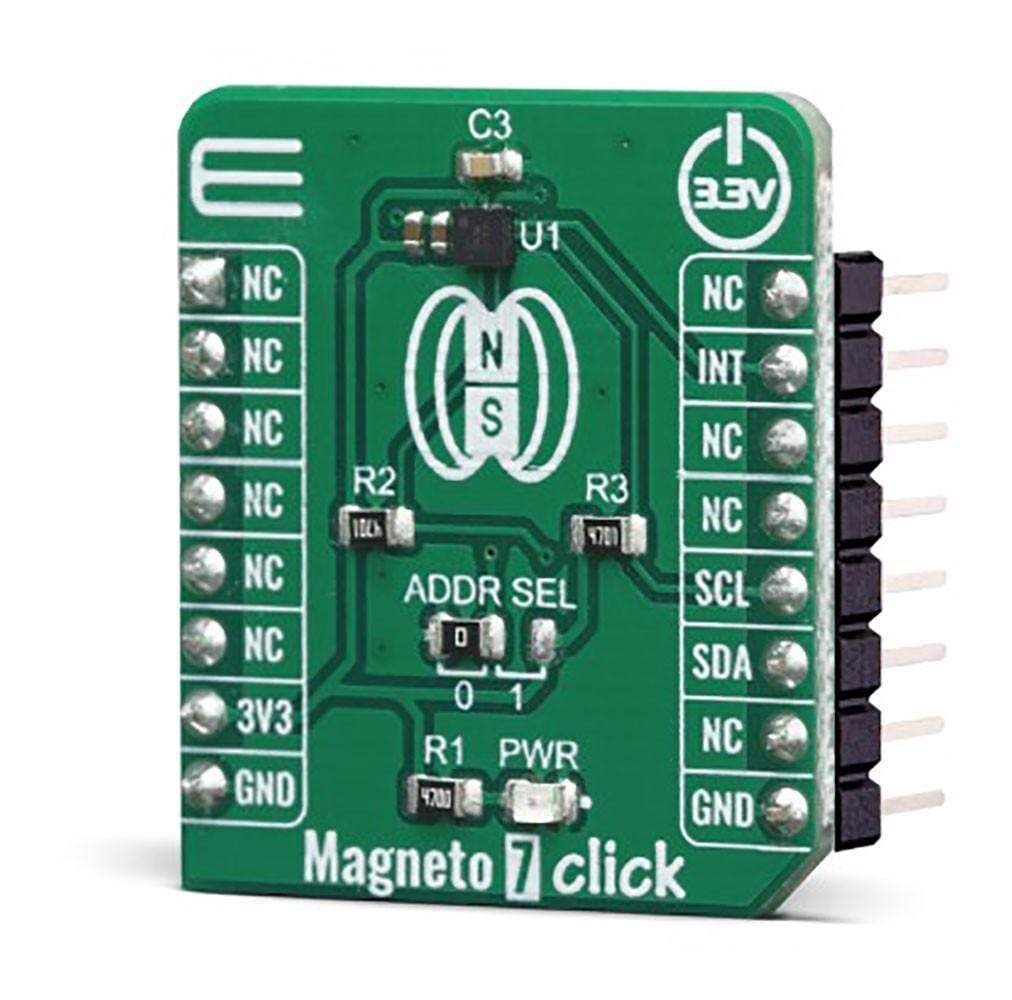
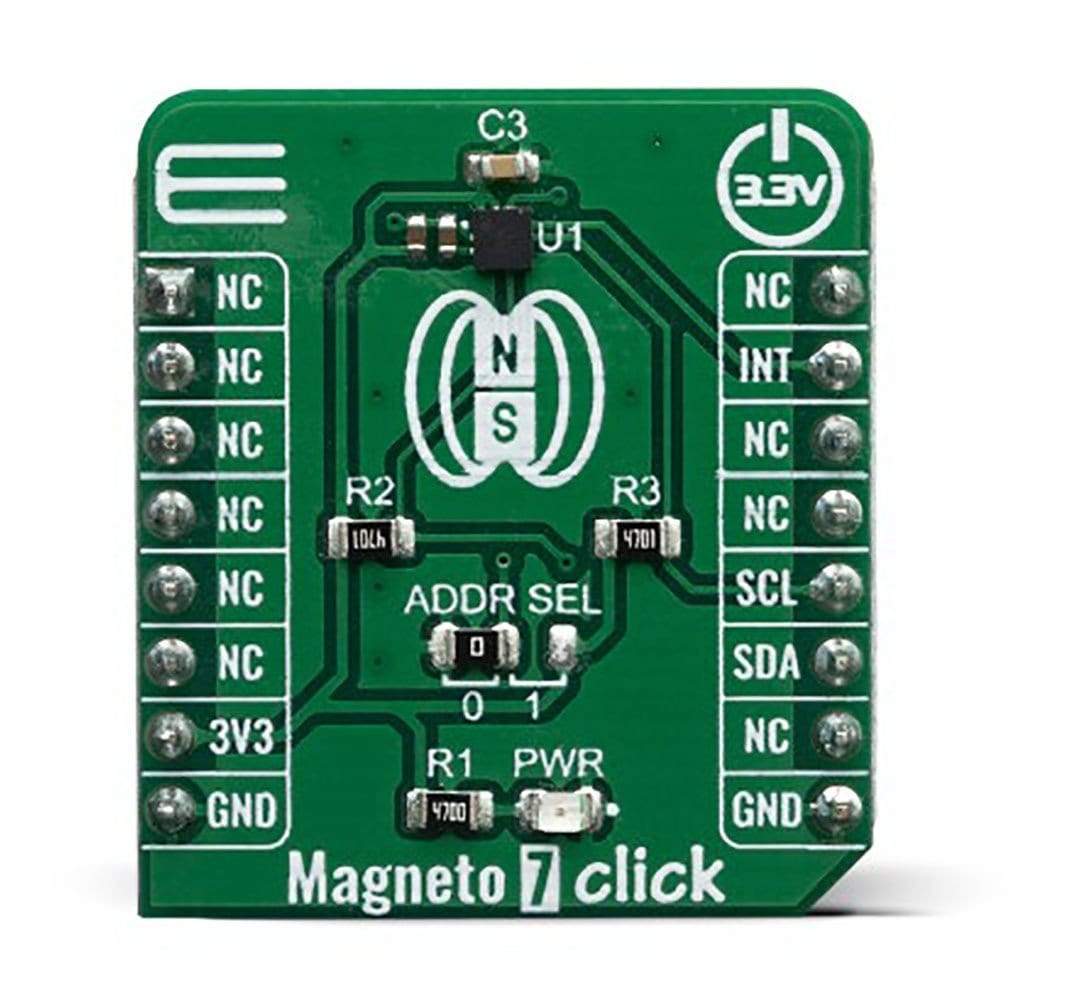
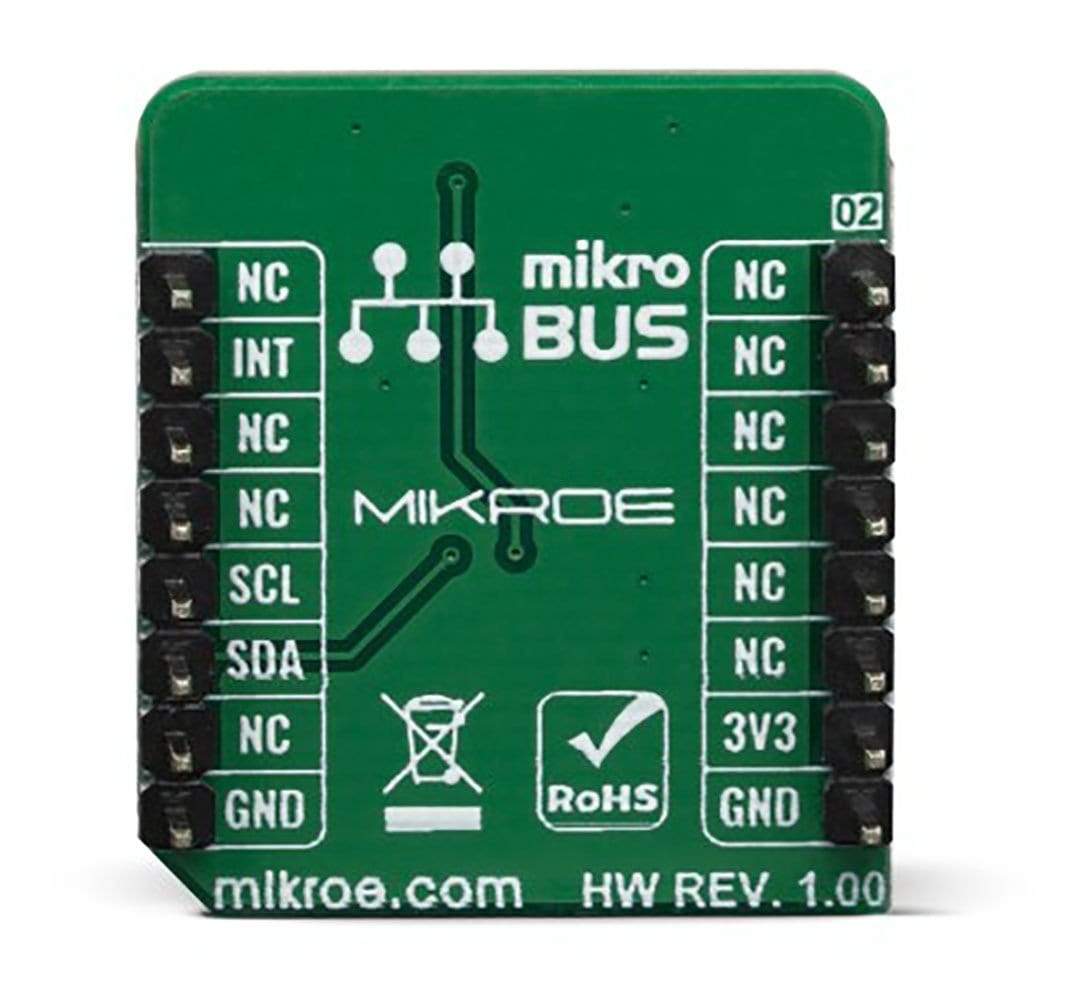
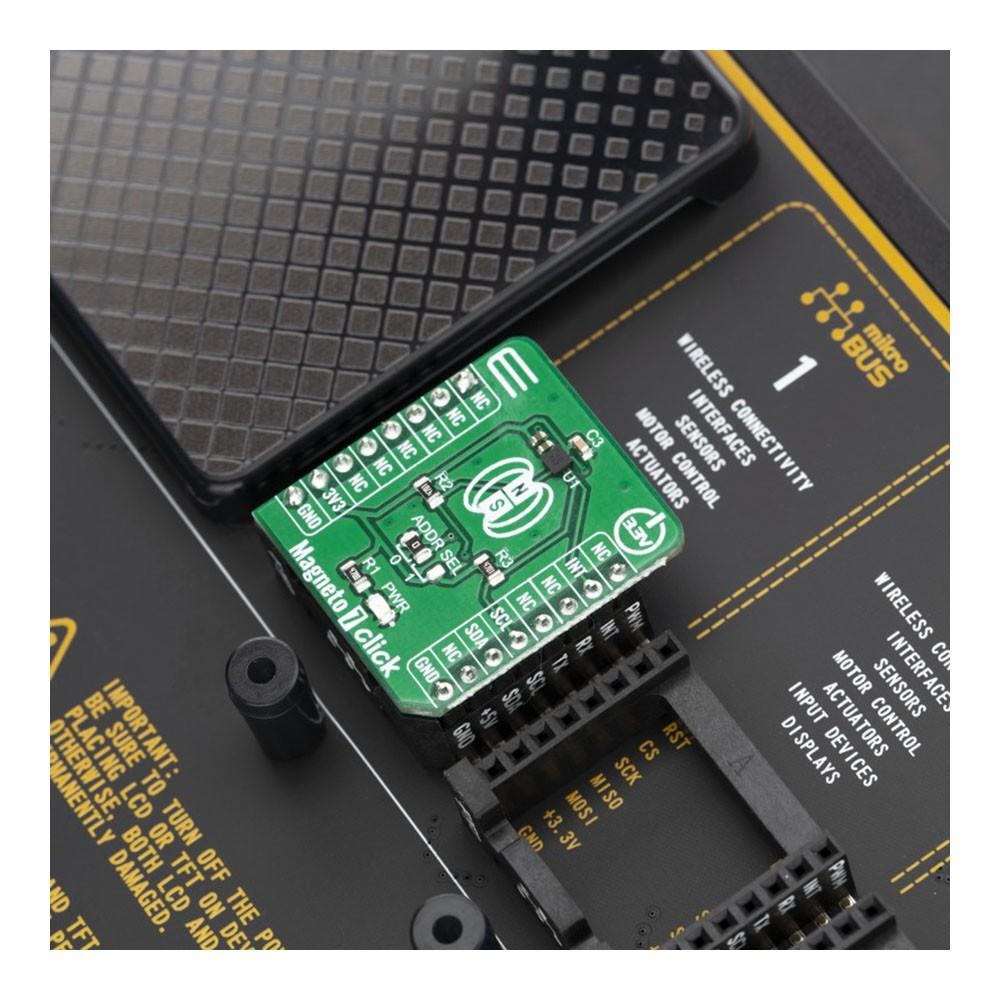
Overview
The Magneto 7 Click Board™ is a high-resolution magnetic sensor Click Board™ that allows contactless orientation sensing. It features the BM1422AGMV, a complete integrated solution with magneto-impedance (MI) elements, low-noise analogue AD converter, and digital signal processing (DSP) sections, on the same die.
Thanks to the internal DSP processing, the BM1422AGMV can output the absolute movement detection over the serial interface as a bitstream. The BM1422AGMV IC is ideal for use in various applications, such as wristwatches, smartphones, tablets, etc.
Downloads
Le Magneto 7 Click Board™ est un capteur magnétique haute résolution Click Board™ qui permet une détection d'orientation sans contact. Il comprend le BM1422AGMV, une solution intégrée complète avec des éléments à magnéto-impédance (MI), un convertisseur analogique-numérique à faible bruit et des sections de traitement du signal numérique (DSP), sur la même matrice.
Grâce au traitement DSP interne, le BM1422AGMV peut transmettre la détection de mouvement absolue via l'interface série sous forme de flux binaire. Le circuit intégré BM1422AGMV est idéal pour une utilisation dans diverses applications, telles que les montres-bracelets, les smartphones, les tablettes, etc.
| General Information | |
|---|---|
Part Number (SKU) |
MIKROE-3657
|
Manufacturer |
|
| Physical and Mechanical | |
Weight |
0.017 kg
|
| Other | |
Country of Origin |
|
HS Code Customs Tariff code
|
|
EAN |
8606018716470
|
Warranty |
|
Frequently Asked Questions
Have a Question?
Be the first to ask a question about this.

